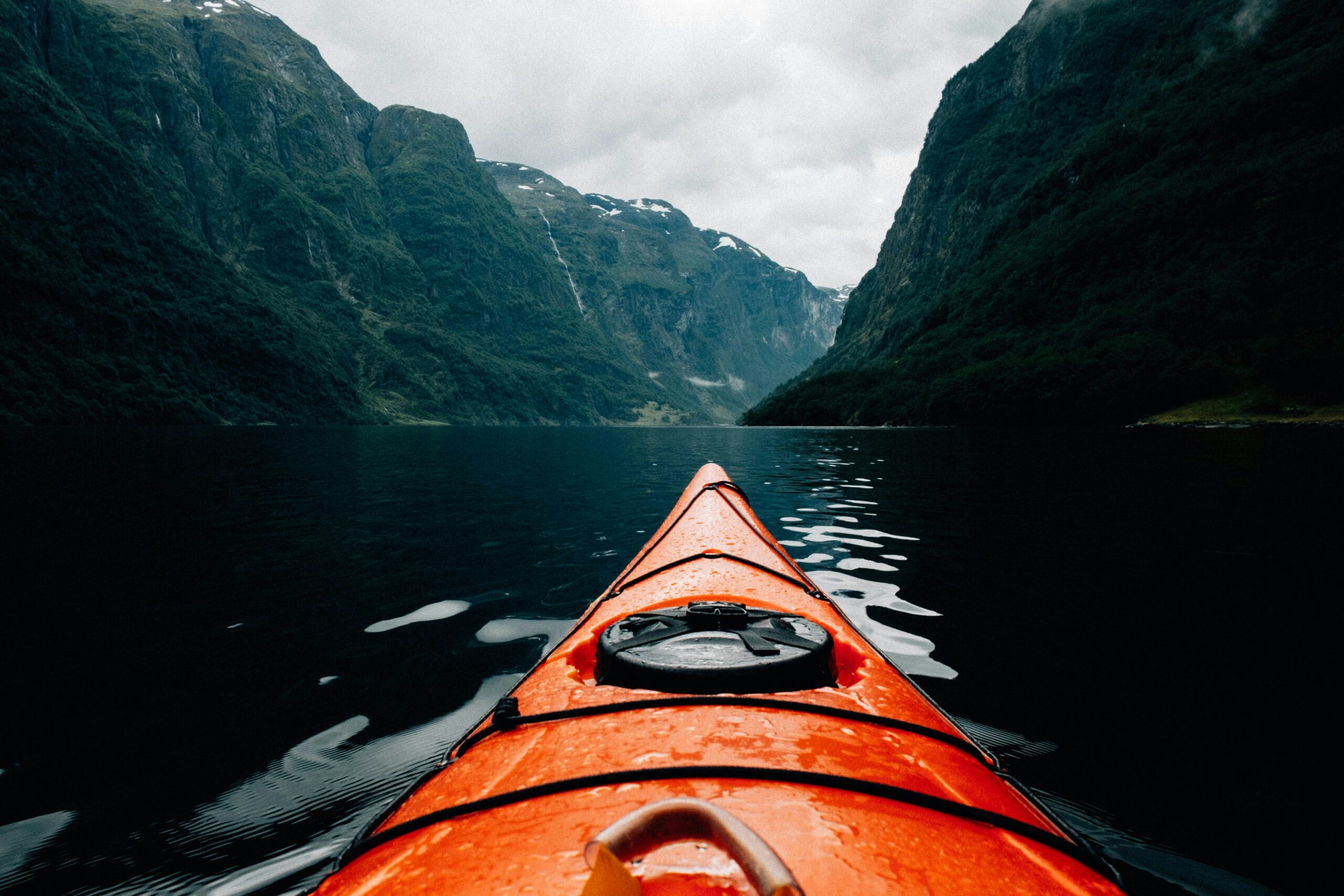Imagine exploring the great outdoors, marveling at the beauty of nature, and getting a closer look at the wonders around you. Now, picture yourself equipped with a pair of binoculars. But here’s the question on everybody’s mind: is 10×42 good for binoculars? In this article, we will explore the merits of this specific binocular type and unravel its suitability for your outdoor adventures and wildlife observations. Get ready for a captivating journey into the world of binocular optics!
Understanding Binocular Numbers
Meaning of 10×42
When you see the numbers associated with binoculars, such as 10×42, it’s important to understand what they mean. The first number, in this case, “10x,” represents the magnification power of the binoculars. It tells you how much the image will appear closer compared to what you would see with the naked eye. The second number, “42,” refers to the diameter of the objective lenses in millimeters. These lenses capture light and determine the brightness and clarity of the image you see through the binoculars.
Importance of the magnification and objective lens diameter
The magnification power and objective lens diameter are both crucial factors to consider when choosing binoculars. The magnification determines how much closer the image will appear, allowing you to see more details. However, higher magnification can also lead to a narrower field of view and increased image shake if not stabilized properly. On the other hand, the objective lens diameter affects the brightness and quality of the image. A larger objective lens size allows more light to enter the binoculars, resulting in a brighter and clearer image.
Differences in magnification and lens size
Different combinations of magnification and lens size offer distinct advantages and disadvantages. Higher magnification, such as 10x, allows you to observe distant objects more closely, making it suitable for birdwatching, wildlife observation, or even stargazing. However, it may also result in a narrower field of view and increased image shake. In contrast, lower magnification provides a wider field of view, making it easier to track moving objects. As for the objective lens size, larger sizes like 42mm gather more light, resulting in better image quality, especially in low-light situations. However, they can make the binoculars heavier and bulkier.
Benefits of 10×42 Binoculars
Pros of the 10x magnification
The 10x magnification offers several advantages for various activities. It allows you to observe details of small or distant objects more clearly, making it perfect for birdwatching and wildlife observation. The higher magnification also proves beneficial for stargazing, allowing you to explore celestial objects with more detail. Whether you’re birding in the forest or stargazing under a dark sky, the 10x magnification brings the world closer to you.
Advantages of the 42mm objective lens size
The 42mm objective lens size is a popular choice for binoculars, and for good reason. With a larger lens diameter, these binoculars can gather more light, resulting in brighter and clearer images, especially in low-light conditions. The increased light transmission is particularly advantageous during dawn, dusk, or under dense foliage. The 42mm objective lens size strikes a balance between brightness and portability, making them versatile for various outdoor activities.
Ideal situations for 10×42 binoculars
The combination of 10x magnification and 42mm objective lens size makes 10×42 binoculars well-suited for certain situations. They are excellent for observing birds, as the higher magnification allows you to distinguish fine details, such as distinctive plumage patterns or behaviors. Wildlife enthusiasts will also appreciate the ability to bring distant animals into close view without disturbing them. Moreover, the 10×42 binoculars are great for stargazing, providing a magnified view of celestial objects and their fascinating details.

Limitations of 10×42 Binoculars
Challenges with 10x magnification
While the 10x magnification offers benefits, it also presents a few challenges. One of the main drawbacks is the narrower field of view, which means you may have difficulty tracking fast-moving objects. Additionally, higher magnification can amplify hand movements, resulting in shaky images if the binoculars are not stabilized properly. It is important to use a tripod or other stabilization methods when using 10x magnification to ensure a steady and enjoyable viewing experience.
Downsides of a 42mm lens size
Although the 42mm objective lens size provides brighter images, it also has some downsides. The larger lens diameter adds weight and bulk to the binoculars, which may impact portability, especially during long hikes or extended outdoor activities. Additionally, large lenses make the binoculars more prone to accidental damage if not adequately protected. It’s essential to consider your intended usage and balance the benefits of increased light transmission with the potential drawbacks of added weight and size.
Scenarios where 10×42 may not be the best choice
While 10×42 binoculars offer numerous advantages, they may not be suitable for every situation. If you require a wider field of view or need to observe fast-moving objects, a lower magnification, such as 8x or 7x, might be a better option. Similarly, if you prioritize portability and lighter weight, you may consider smaller objective lens sizes like 32mm or 25mm. Assessing your specific needs and considering the trade-offs of various magnification and lens size combinations will help you determine the ideal binoculars for your intended use.
Comparison with Other Binoculars
How 10×42 compares to lower magnification models
When comparing 10×42 binoculars to lower magnification models, it’s important to consider both the benefits and limitations of each option. Lower magnification binoculars, such as 8x or 7x, offer a wider field of view, making them ideal for activities where tracking moving objects is crucial, like sports or wildlife photography. However, they sacrifice some magnification power and detailed observation capabilities. The choice between 10×42 and lower magnification binoculars ultimately depends on your specific needs and preferences.
Comparison with larger objective lens models
Larger objective lens models, such as 10×50 or 12×56, offer increased light gathering capabilities and potentially brighter images. They are particularly useful for low-light conditions, like stargazing or observing nocturnal wildlife. However, the larger lens size also makes these binoculars heavier and bulkier to carry around. Additionally, the increased light-gathering power may result in a shallower depth of field, limiting the range of sharp focus. Consider your intended usage and prioritize the trade-offs between brightness, weight, and field of view when comparing different objective lens sizes.
Balancing magnification and lens size effectively
Choosing the right balance between magnification and lens size is crucial for optimal performance. While higher magnification can bring distant objects closer, it may also amplify hand movements and reduce the field of view. On the other hand, larger objective lens size allows more light, resulting in brighter images, but it can also add weight and bulk. It’s essential to consider your specific requirements, such as the activities you’ll be using the binoculars for and the desired level of detail and brightness. Finding the appropriate balance will ensure you get the best possible viewing experience.

How Binocular Size Affects Performance
Impact of binocular size on image clarity
The size of binoculars plays a significant role in the clarity of the images you observe. Larger binoculars often have larger objective lenses, allowing them to capture more light and produce brighter images, particularly in low-light conditions. This increased light transmission contributes to enhanced image clarity, enabling you to see finer details and subtle nuances. However, it’s worth noting that larger binoculars can be heavier and more challenging to stabilize, potentially leading to shakier images if not properly supported.
How binocular size influences field of view
Binocular size, particularly the objective lens diameter, also affects the field of view. A wider field of view allows you to observe a broader area without needing to move the binoculars. Smaller binoculars with lower magnification tend to offer wider fields of view, which can be advantageous for tracking fast-moving objects or scanning large landscapes. However, larger binoculars with higher magnification typically have narrower fields of view, which may make it more challenging to track fast or distant subjects. When choosing binoculars, consider the level of detail needed versus the desire for a wider field of view.
Size-related considerations in relation to user comfort and convenience
The size of binoculars can also impact user comfort and convenience. Larger binoculars with bigger objective lenses may provide better image quality, but they tend to be heavier, bulkier, and more cumbersome to carry around. These larger sizes may pose challenges during long periods of use or outdoor activities that require frequent movement. On the other hand, smaller and more compact binoculars are lightweight and portable, offering greater ease of use and convenience. When selecting binoculars, it’s important to strike a balance between image quality and user comfort to ensure an enjoyable and hassle-free experience.
Who Should Choose 10×42 Binoculars?
Ideal users for 10×42 based on nature observation
Nature enthusiasts who enjoy observing birds, wildlife, or engaging in general nature observation would find 10×42 binoculars to be an excellent choice. The 10x magnification allows for detailed observation of animals or birds without causing too much image shake. The 42mm objective lens size ensures bright and clear images, even in low-light conditions, making these binoculars versatile for various nature-oriented activities. Whether you’re birdwatching, tracking wildlife, or simply marveling at the natural wonders around you, 10×42 binoculars will enhance your experience.
Whether 10×42 binoculars are suitable for astronomy
While 10×42 binoculars are not specifically designed for astronomy, they can still be used for stargazing and casual astronomical observations. The 10x magnification provides decent detail when observing the Moon, planets, and even certain bright deep-sky objects. However, for more in-depth and intricate celestial observations, specialized astronomical binoculars with larger aperture sizes are recommended. If you’re an avid stargazer seeking to explore the cosmic wonders above, consider investing in larger aperture binoculars or a telescope for optimal astronomical viewing.
Considerations for potential users with specific needs, like birdwatchers or hunters
For birdwatchers, 10×42 binoculars strike a balance between portability and magnification power, making them suitable for observing both small and distant birds. The 10x magnification allows for detailed identification of different bird species, while the 42mm objective lens size ensures bright images, even in shaded or forested areas. Hunters, on the other hand, may prefer binoculars with lower magnification for wider fields of view and easier tracking of fast-moving game. Ultimately, understanding your specific needs and considering factors like magnification, lens size, and weight will help you choose the right binoculars for your activities.

Recommended 10×42 Binoculars
Popular models of 10×42 binoculars
When it comes to choosing the right 10×42 binoculars, several reputable models are highly regarded by users and experts. Some popular models include the Nikon Monarch 5 10×42, Vortex Diamondback HD 10×42, and Zeiss Terra ED 10×42. These binoculars are known for their excellent optical performance, durability, and ergonomic designs, ensuring a comfortable and enjoyable viewing experience.
Key features to look for
When searching for the perfect 10×42 binoculars, certain key features are worth considering. Look for binoculars with high-quality optics, preferably with multi-coated or fully multi-coated lenses, as they provide superior light transmission and image clarity. Waterproof and fogproof construction is essential for outdoor activities, as it ensures the longevity and reliability of the binoculars in various weather conditions. Ergonomics, such as a comfortable grip and adjustable eyecups, are also important for extended use and ease of customization.
Price ranges for quality 10×42 binoculars
The price range for 10×42 binoculars can vary depending on the brand, build quality, and additional features. Entry-level to mid-range options typically range from $150 to $500, offering good optical performance and durability for casual to moderate use. Premium models from renowned brands can cost anywhere from $500 to $2000, providing exceptional optical quality, advanced features, and robust construction for enthusiasts and professionals. Consider your budget and intended usage when determining the best price range for your 10×42 binoculars.
Care and Maintenance for 10×42 Binoculars
Cleaning tips for 10×42 binoculars
Proper cleaning is essential for maintaining the performance and longevity of your 10×42 binoculars. Start by using a soft brush or air blower to remove any large debris or dust particles from the lenses and body. Next, lightly dampen a microfiber cloth with lens cleaning solution or water and gently wipe the lenses and eyepieces in a circular motion. Avoid excessive pressure or using harsh cleaning agents that can damage the coatings. Finally, use a dry part of the cloth to remove any moisture or smudges, ensuring a clear and smudge-free view.
How to store your binoculars when not in use
When not in use, it’s important to store your 10×42 binoculars properly to prevent any damage or deterioration. Store them in a dry and cool environment, preferably in a foam-lined case or a padded binocular harness. This protects them from potential impacts, dust, and moisture. Avoid exposing the binoculars to extreme temperatures or direct sunlight, as this can harm the optical components or cause internal fogging. Proper storage ensures that your binoculars are always in optimal condition and ready for your next adventure.
Recommended servicing and repairs
Regular maintenance and occasional servicing can help prolong the life of your 10×42 binoculars. If you notice any issues with image quality, focusing mechanisms, or loose parts, it’s best to consult the manufacturer’s instructions or seek professional servicing. Manufacturers often provide accredited service centers that can inspect, clean, and repair your binoculars. Avoid disassembling or attempting to fix internal components yourself, as this can cause further damage. Taking the necessary steps to properly maintain and service your binoculars will ensure they remain in peak condition for years to come.
Reviews and Testimonials
What users are saying about 10×42 binoculars
Users of 10×42 binoculars often praise their versatility and excellent performance. Many appreciate the 10x magnification for its ability to bring subjects closer and reveal fine details. The 42mm objective lens size also receives compliments for providing bright and clear images even in challenging lighting conditions. Additionally, users often mention the comfortable ergonomics and durability of the binoculars, making them an ideal choice for extended use during outdoor activities. Overall, the positive reviews from satisfied users highlight the 10×42 binoculars as a reliable and enjoyable tool for various observations.
Lessons from professionals using 10×42 binoculars
Professionals who rely on 10×42 binoculars for their work also have valuable insights to offer. Whether ornithologists, wildlife researchers, or experienced hunters, professionals appreciate the detailed observation capabilities and brightness of the 10×42 binoculars. They emphasize the importance of steadying the binoculars to minimize image shake when using higher magnification. Many professionals also emphasize the value of waterproof and rugged construction for withstanding the demands of field use. Learning from the experiences of professionals can help you make informed decisions when choosing and using your 10×42 binoculars.
Comparisons and reviews from reputable sources
When researching 10×42 binoculars, it’s beneficial to consult reputable sources for expert comparisons and reviews. Independent organizations, outdoor magazines, and specialized websites often conduct thorough tests and evaluations of binoculars, considering factors like optical performance, build quality, ergonomics, and value for money. Reading these sources will provide a broader perspective and help you make an informed decision based on reliable and unbiased information.
Conclusion
Final thoughts on whether 10×42 is good for binoculars
In conclusion, 10×42 binoculars are a highly versatile and popular choice for various outdoor activities. The combination of 10x magnification and 42mm objective lens size offers detailed observation capabilities and bright images, even in challenging lighting conditions. While they may have some limitations, such as a narrower field of view and added weight, these are often outweighed by the benefits they provide. Whether you are an avid birdwatcher, a wildlife enthusiast, or enjoy stargazing, 10×42 binoculars can significantly enhance your experience.
Shortcomings and strengths of 10×42
As with any binoculars, 10×42 models have their strengths and limitations. The 10x magnification allows for detailed observations, but it may also result in a narrower field of view and increased image shake if not stabilized properly. The 42mm objective lens size ensures bright and clear images but adds weight and bulk to the binoculars. However, these shortcomings are often eclipsed by the versatility and performance provided by 10×42 binoculars, making them a popular choice among outdoor enthusiasts.
Where to go from here
If you’re considering purchasing 10×42 binoculars, it’s important to determine your specific needs and preferences. Consider the activities you’ll be using the binoculars for, the level of detail you desire, and the trade-offs between magnification, lens size, and weight. Research reputable models, read user reviews, and consult expert opinions to make an informed decision. Remember to take proper care of your binoculars and enjoy the immersive and detailed views they will provide on your future adventures.
